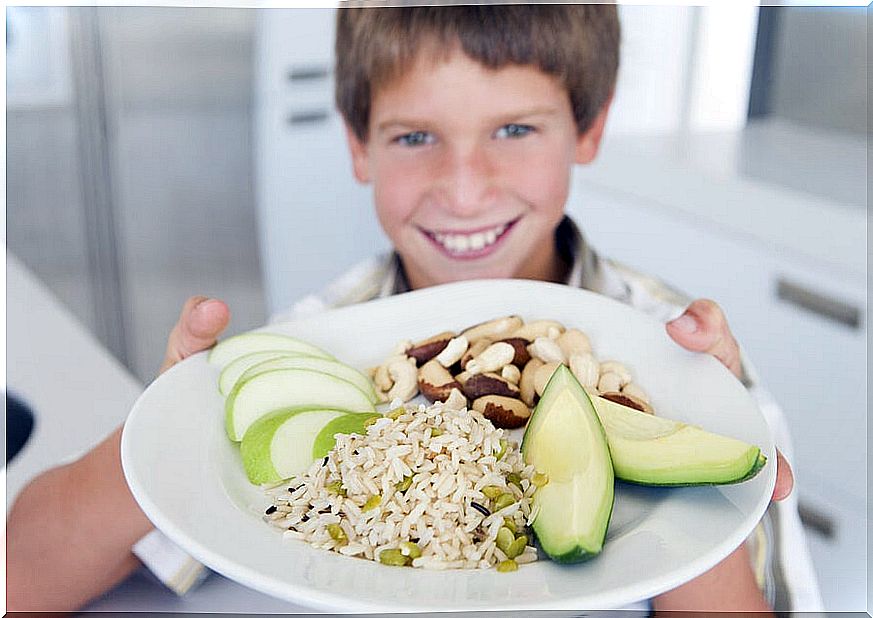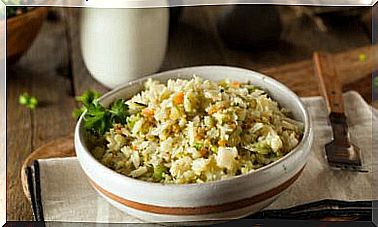Food In School Canteens
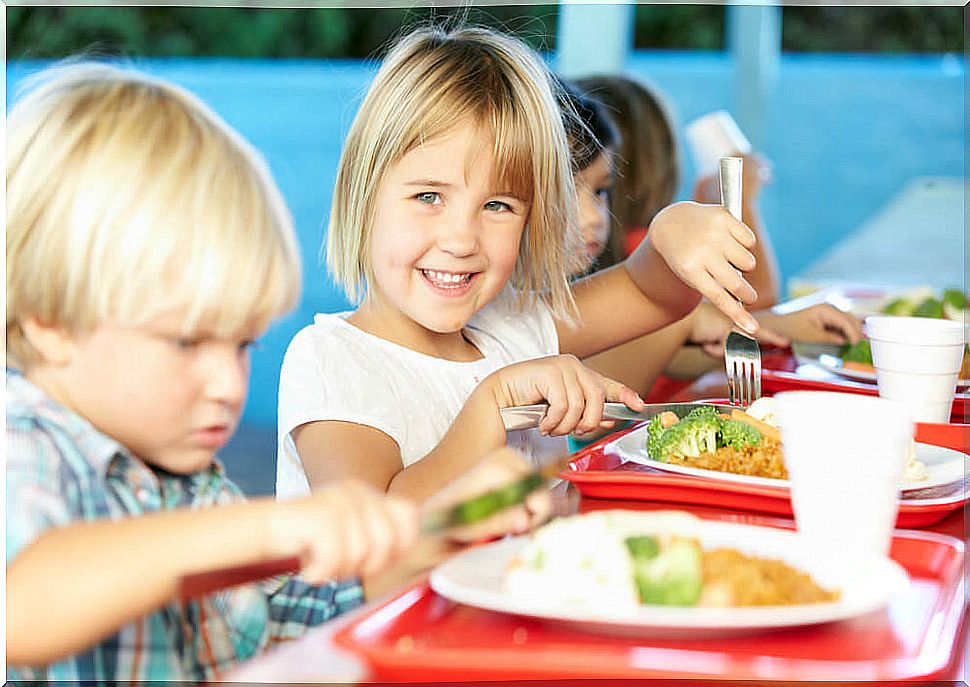
The new social realities (incorporation of women into work, single-parent families, the great distances between home and school…) have meant that the demand for the school canteen service has grown continuously. School canteens must ensure a balanced and healthy diet for children.
Is your son going to start the school canteen this new year? Here we tell you how food should be in schools to meet the nutritional needs of children.
How should food be in school canteens?
Correct nutrition in childhood is essential to achieve adequate physical and intellectual growth and development, avoid excesses or nutritional deficiencies and prevent many of the chronic diseases of adults, such as obesity, hypertension, diabetes, osteoporosis …
Functions of the school cafeteria
Establishing nutrition education, nutrition policy, good food marketing management, and parental involvement at school can prevent overweight and obesity, as this article published in Pediatrics shows .
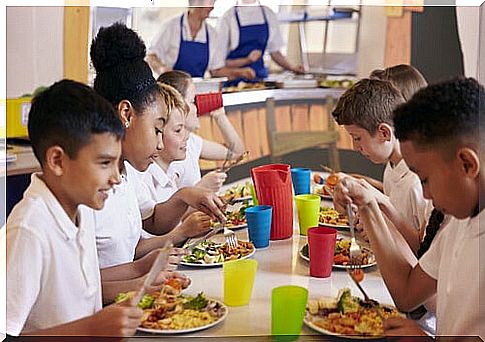
Nutritional
Food in school canteens must guarantee a healthy, balanced diet adapted to nutritional needs, according to the age of the students, which favors health and growth. The main meal should offer around 30-35% of the daily energy intake and an adequate quantity and quality of nutrients. It is also very important that, apart from the fact that the dish is nutritious, it is attractive to the child.
Educational
- It should promote healthy habits, attitudes and lifestyles. The first years of life are crucial in learning good eating habits and the implementation of appropriate guidelines for eating behavior will be decisive throughout it.
- Promote the adaptation of students to a diversity of menus. Knowing about foods, appreciating their differences, assessing the needs of each of them and learning to eat everything is the goal of nutritional education. In addition, the consumption of food in the company of their companions favors the acceptance of new dishes.
- It is essential that the child be taught hygienic habits : general hygiene, hands, teeth, manipulation of food consumption, etc., as well as in good manners: use cutlery, maintain a correct posture, chew well, use a napkin, avoid talking with your mouth full, etc.
Guidance for the school cafeteria menu
A healthy and balanced menu is one that meets energy requirements and provides the necessary nutrients to maintain health. You must:
General Orientations
- Ensure a sufficient caloric intake according to age and physical activity. The menu should provide between 30-35% of the daily energy needs.
- Carbohydrates (vegetables, fruit, bread, pasta, rice, etc.) should provide 50-55% of the calories in the diet.
- It is recommended that fats do not exceed 30% of the daily intake, and the consumption of saturated and trans fats should be reduced.
- Proteins should provide between 10 and 15% of total calories, combining proteins of animal and vegetable origin, and promoting the consumption of legumes.
- Provide the daily needs of vitamins and trace elements. The recommended intakes of micronutrients, minerals and vitamins should be calculated over a period of 15 days.
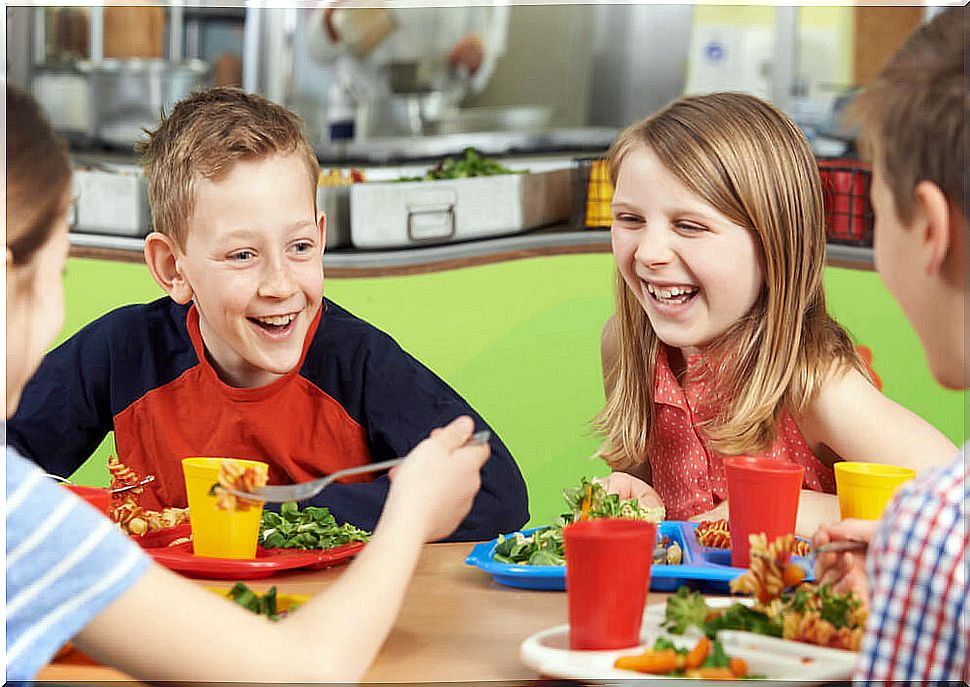
Specific Orientations
- It is recommended that the first dishes be legumes, vegetables, pasta and rice, and the second ones are composed and served alternatively by meat, fish and eggs, with a vegetable-based garnish.
- In desserts you must choose between fruit or yogurt.
- It is important when preparing menus not to fall into monotony. Therefore, it is recommended that the same menu is not repeated after at least 15 days.
- The daily intake of fruits, vegetables and vegetables should be increased by at least 5 servings a day. It is convenient to increase the contribution of fresh or cooked assorted vegetables, both in the first dishes and in the garnish of the second ones. The consumption of stews prepared with vegetables, potatoes, greens or a combination of cereals and legumes should also be promoted.
- It is preferable to enhance the fish before the meat, both white and blue fish.
- The portion of bread that is, preferably, integral.
- We must avoid the consumption of precooked and fried products, as well as sweets and industrial pastries.
- It is important to eat fresh, seasonal food with little manipulation.
- Vary the menus according to the time of year.
- Parents should be provided with a copy of the menus, including the type of preparation and the composition of the side dishes and desserts.
The menus offered in these collective dining rooms must meet the minimum standards of composition and quality, enhancing traditional food based on the Mediterranean diet with abundant fresh, local food, fruits and vegetables.
